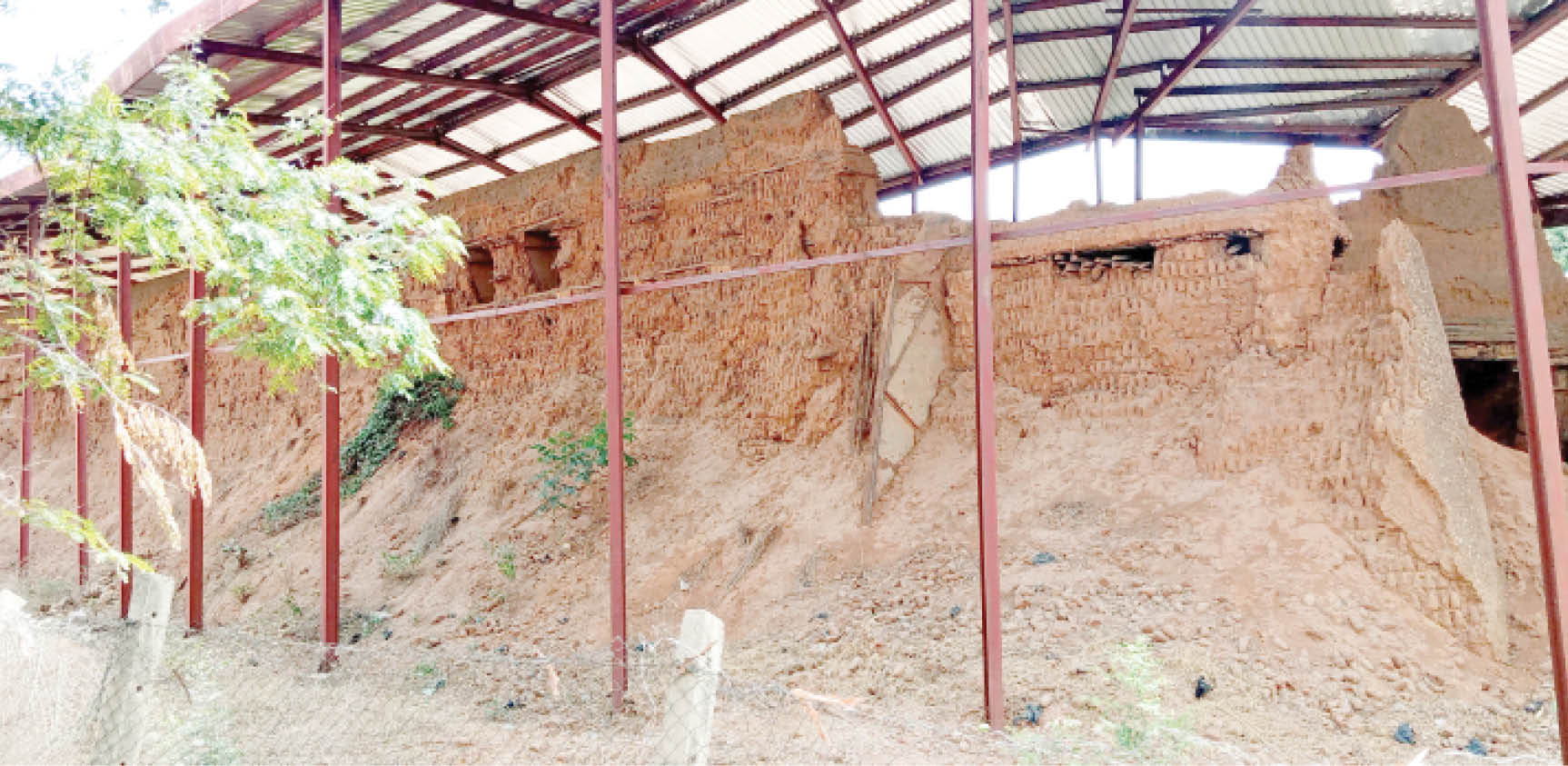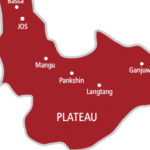The Jos museum, which incorporates the Museum of Traditional Nigerian Architecture (MOTNA), with life-size replicas of a variety of buildings, from the walls of Kano and the mosque of Zaria, to the Tiv and Anaguta compounds, is today a ghost of itself. Once a centre of knowledge, culture and tourism, some parts of MOTNA now lie in a pile of sand. Daily Trust on Sunday reports the decades of neglect and religious controversies that leave Nigeria’s historical monuments in ruins.
From Yusufu Aminu Idegu, Jos
The Jos museum, which incorporates the Museum of Traditional Nigerian Architecture (MOTNA), used to be a site to behold. University students across West Africa used to visit the ancient structures for historical knowledge. Architectural students found the preserved ancient designs inspiring, and for students of Theatre and Film Arts, as well as those of the Nigerian Film Corporation and the Film Institute, MOTNA provided a captivating setting to stage plays and dramas that depicted Nigeria’s traditional settings.
- 2023: I’ll beat Tinubu, Amaechi, Okorocha at APC presidential primary – Yahaya Bello
- How Buhari Resolved APC Crisis In 2 Weeks While Insecurity Festers
Today, however, the historical structures which once provided an imposing status of Nigeria’s past and cultural heritage has been turned into a heap of red sand, akin to an anthill.
In 2002, Nigeria’s then Minister of Culture and Tourism, Ojo Maduekwe, while touring the Jos museum, aptly described it as a “refrigerated memory of Nigerian culture and history.”
The museum used to be famous for housing the country’s traditional architectural design on display, where one could find the Kano walls, the Bight of Benin, the Katsina mosque and other cultural architectural designs. Sadly, today, a number of these monuments which had been preserved for historical and cultural importance have been left in ruins.
Records available to our correspondent have it that the Jos museum was set up in 1952 by Bernard Fagg, a British archaeologist who worked for the then British colonial administration in Jos, and widely associated with the discovery of Nigeria’s Nok culture.

The Jos museum is a complex of different exhibition areas situated within Jos city, where visitors can admire samples of terracotta figurines attributed to Nok people. The complex also has areas dedicated to the history of architecture, tin mining and railways.
Experts said that in that the past, the museum had served as an important centre of research into the prehistoric culture of Nigeria, and was once recognised as one of the best in the country.
The pottery hall of the museum has a collection of uniquely crafted pottery from all over the country and MOTNA’s life-size replicas of a variety of buildings, from the walls of Kano and the mosque in Zaria to a Tiv compound, which gave the museum a unique attribute.
A former staff of the museum, Mr Labaran Musa, described the Kano wall as a unique architecture on its own, saying, “if you look at the building you cannot access the wall from outside, there is a drainage around it that is almost a gully. That makes it difficult for one to climb the wall from outside. So the design of the building takes care of its security and whoever is inside it.”
He added that in pre-colonial days and traditional warfare, enemies on horses were unable to access the Kano wall from outside.
“When you shot your arrows they would not penetrate the wall. Then, there were holes round the topmost side of the wall, through which the person inside could peep to see anyone outside and shoot his arrow towards the enemy from the inside,” he narrated.
The Director of Civil Liberty Organisation, Mr Steve Aluko, also said, It is unfortunate that these traditional architectural monuments today lie in ruins, looking like an ancient village destroyed by war or tsunami.”
Our correspondent reports that a visit to the museum shows an institution suffering from decades of neglect.

Daily Trust on Sunday found that among some of the factors responsible for the collapse of the museum and others across the country is religion.
Santos Ayuba Larab, a senior lecturer in the Department of History and International Studies, University of Jos, said the federal government, which is responsible for preserving the country’s cultural heritage, chose to abandon the museum because some religious leaders saw the cultural artefacts as fetish, and therefore, should be discarded.
Larab, who is also a member of the Historical Society of Nigeria said, “The problem began with attaching religious sentiments to our cultural heritage. So we have allowed religion to kill our history.”
Our correspondent discovered that the land mass of over 100 hectares belonging to the museum and meant to accommodate more architectural structures of various ethnic groups, has been sold out to private individuals, who now use the space as event centres, horticulture and restaurants.
The largest part of the museum is the section where MOTNA is found. There, one can have access to unique pre-colonial designs of buildings of various ethnic groups. From the Tiv compound of Benue State, to the Anaguta, Jarawa and Berom people of Plateau State, the monument’s beauty, serenity, as well as its security features used to be a sight to behold.
A retired senior staff of the museum, Mr Funsho Ajayi said, “Those preserved buildings have their historical value for students taking Nigerian History in our universities. They are also relevant for students of Archaeology, as well as students of Architecture and Building. The research components of those monuments cannot be underestimated. We have had students of various universities come to the museum to study those buildings for their academic work.”
At the MOTNA, our correspondent gathered that the Tiv compound on the other hand has been rented out to the Tiv community in Jos, who now use the space as a drinking palour and restaurant. The Tiv also hold their regular meetings and cultural festivities to mark the annual Museum Day within the compound.
The Anaguta, Afizere and Irigwe compounds are being maintained by socio-cultural organisations of the ethnic groups, and the buildings in those compounds can be seen in their original forms, erected with mud bricks and roofed with thatch.
Visitors often go to the compounds to see cultural artefacts of the ethnic groups and buy traditional musical instruments like drums, gongs, as well as traditional attires and other materials, such as beads, mats and wooden seats.
However, our correspondent observed that the Kano walls, the Katsina Mosque and Zaria House are almost totally ruined.
The Kano wall, which is the largest structure in the museum, is the worst hit by degradation. Our correspondent observed that despite showing signs of total collapse in the last decade, the structure is yet to be renovated. A failed attempt to save the wall by constructing an aluminum roof has done little to slow its degradation.
Labaran Musa, a former staff of the museum, said the security features of the Kano wall was planned and made with local building materials, which he said could be replicated or modified.
“It was mud, moulded, burnt and built. The mud used to build the house is weather-resistant and regulated; it stabilizes weather conditions,” he said.
To revive the Kano walls and other historical monuments lying in ruins, Santos Ayuba Larab asked the federal government to get experts with the right skills to reconstruct the monuments and bring them back to life.
“The attempt by the government to construct iron roof to protect the Kano wall is a distortion of history. That building can be reconstructed in its original design,” he said.
For anyone who has visited the Jos Museum, its present state leaves a bitter taste in the mouth.
Mr Barnabas Kusa, a graduate of Theatre Arts from the University of Jos, told Daily Trust on Sunday that the value of the museum to the present and future generations could not be quantified.
“Government should not allow it to die. If the government cannot maintain these monuments they should privatise it. And I am sure that if they do that, the University of Jos will take it over because it has been a source of knowledge and research for the institution.
“As students of Theatre Arts, the university brought us here a number of times for lectures. We had also performed dramas and acted films here. We have also met students from other universities who visited for studies and research. So, the relevance of this museum is not only for the University of Jos but for universities within and outside this country,” he said.
Expressing frustration over the deteriorating structure of the museum, the head of the Department of Archaeology, University of Jos, Professor Joseph Jemkur said, “I have stopped going to the museum because each time I pass there and see its terrible condition, I shed tears. “Other societies all over the world are preserving their cultural heritage because they know the value, but here in Nigeria, our history is suffering. It is like we no longer appreciate the relevance of history. I am a trained archeologist and I teach Archeology in the university. I weep for this country.”
As a historian, Santos Ayuba Larab understands the value of preserving the past for the future. He explained that, “If we destroy our museums, the legacy of African paintings is gone, the beauty of African architecture is gone. In short, our history is gone.
“With the monuments, the legacies of the generations we never met are there for us to see, and that alone connects us with the past generations. With those monuments, we can understand who they were and the kind of life they lived, and their handwork.”
The historian explained that as a member of the African museum who is conversant with the importance other countries have placed on preserving their cultural heritage, it is time for the Nigerian government to consider public-private partnership if it cannot maintain the museums.
He decried that government has not been investing in museums, even when it knows that they are not profit-making.
“Members of staff are not even paid well, but in Europe and America, the curators of museums are among the best paid. Here, they are poorly treated and poorly remunerated. It will greatly benefit the country and its citizens if we can bring back those monuments; there is something we need to learn from them.
“The United Nations (UN) did not establish United Nations Educational, Scientific and Cultural Organisation (UNESCO) for nothing; it is for the preservation and development of our cultural heritage, as well as material and non-material culture. The UN saw reasons to preserve our tangible and intangible culture, and that was why we have the UNESCO. Nigeria should wake up.
“There is also the need for hybridisation of our ancient architecture and modern ones as the Chinese do. In China today, they build all kinds of houses with bamboo trees. They have already infused local technology into modern architecture. They have improved on it,” he said.
The curators of the Jos Museum and those of the Museum of Traditional Nigerian Architecture (MOTNA) declined comment and referred our correspondent to the Federal Ministry for Information and Culture in Abuja.

 Join Daily Trust WhatsApp Community For Quick Access To News and Happenings Around You.
Join Daily Trust WhatsApp Community For Quick Access To News and Happenings Around You.

